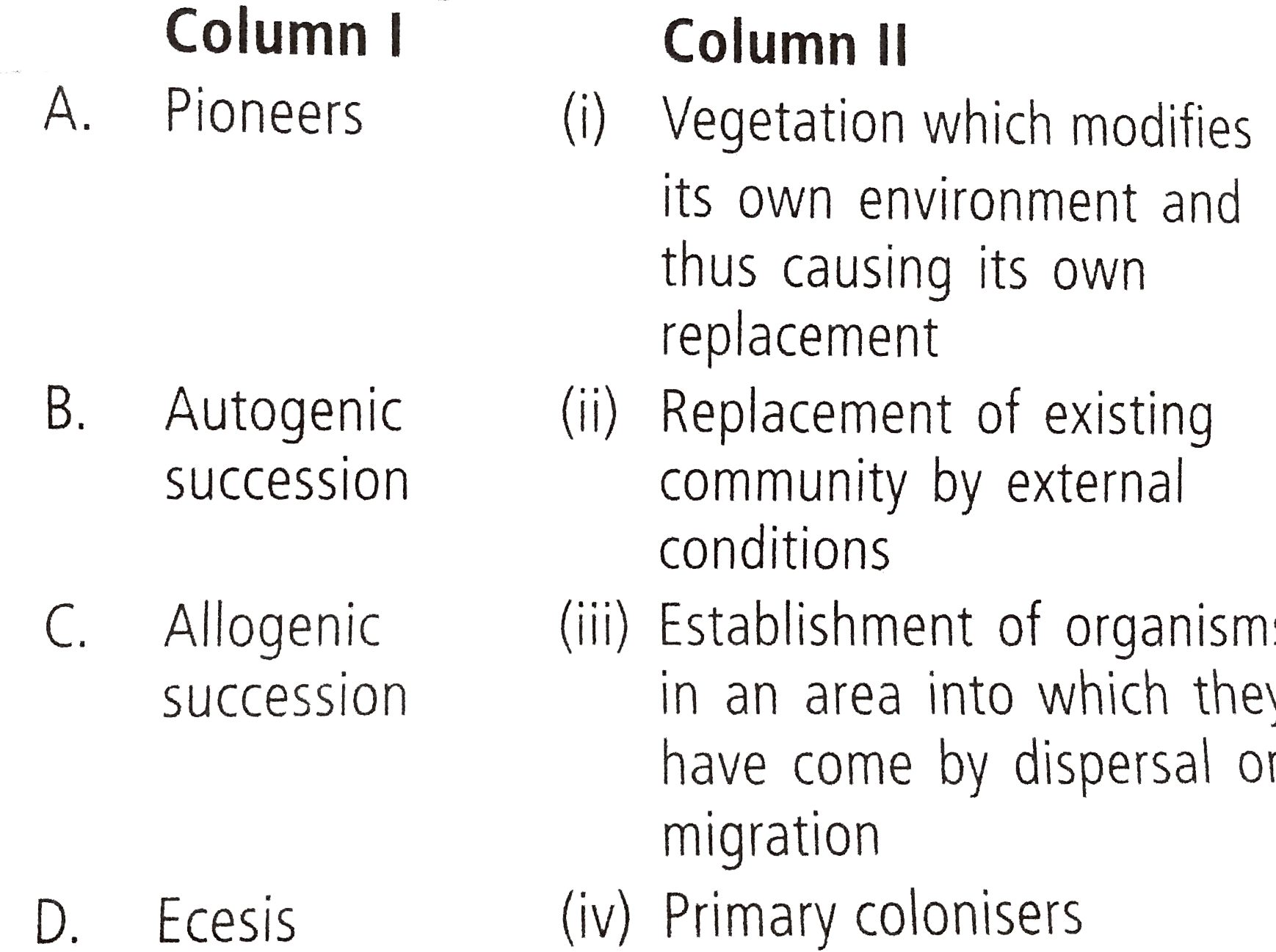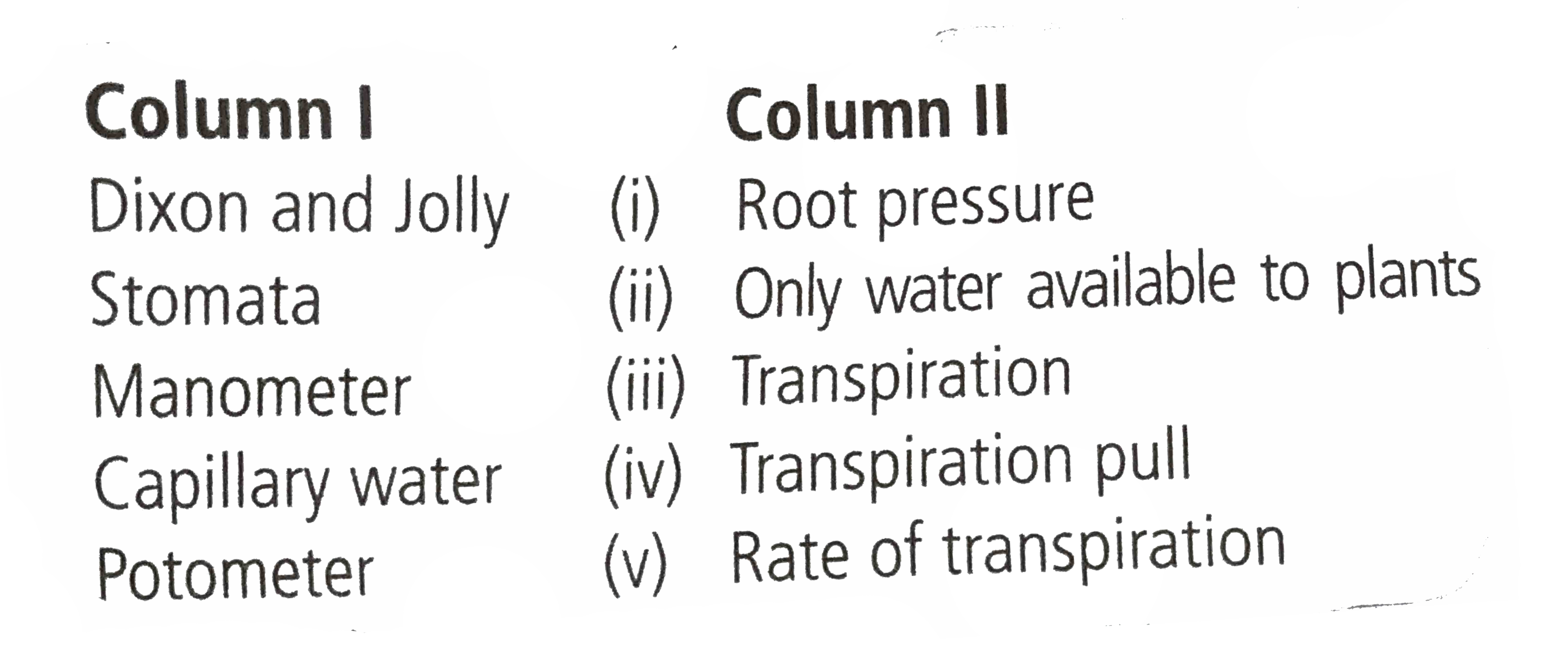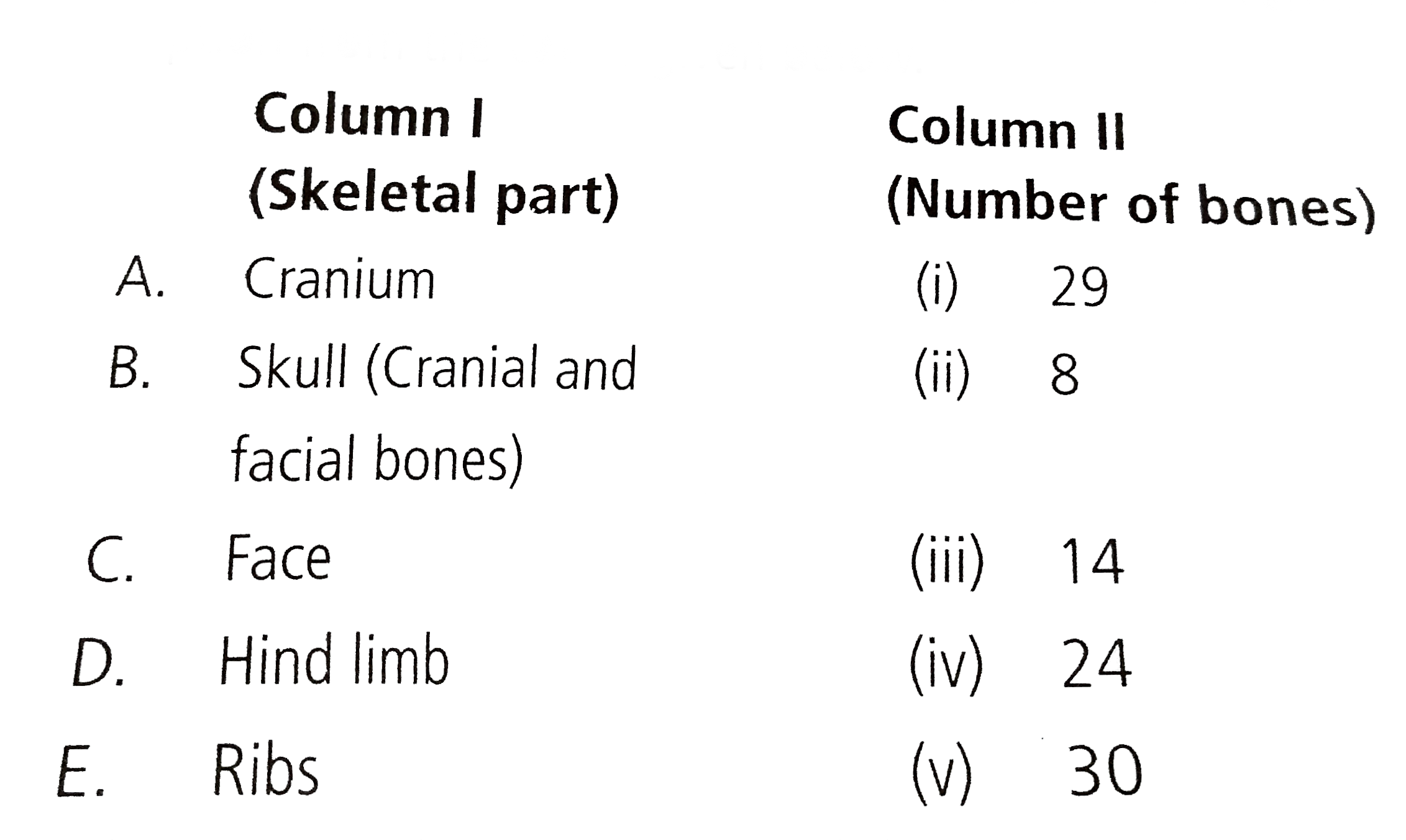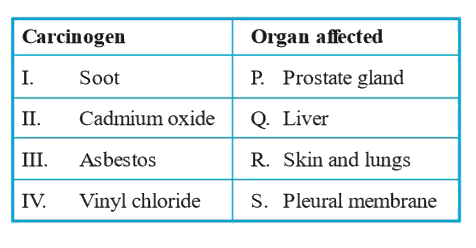Match the column I with column II and select the option from given codes.
Column IColumn IISynaptonemal complex(i)PachyteneRecombination nodule(ii)ZygoteneTerminalisation of chiasmata(iii)Telophase IFormation of dyad cell(iv)Diakinesis
ii,i,iv,iii
i,ii,iv,iii
iii,i,iv,ii
ii,i,iii,iv
The correct Answer is:A
To solve the matching question between Column I and Column II, we will analyze each term in Column I and identify its corresponding term in Column II based on the stages of meiosis.
1. Identify the first term: Synaptonemal complex
- The synaptonemal complex is formed during the zygotene stage of prophase I, where homologous chromosomes pair up.
- Match: Synaptonemal complex → Zygotene (ii)
2. Identify the second term: Recombination nodule
- The recombination nodule is associated with the process of crossing over, which occurs during the pachytene stage of prophase I.
- Match: Recombination nodule → Pachytene (i)
3. Identify the third term: Terminalization of chiasmata
- Terminalization of chiasmata occurs during the diakinesis stage, which is the final stage of prophase I.
- Match: Terminalization of chiasmata → Diakinesis (iv)
4. Identify the fourth term: Formation of dyad cell
- The formation of dyad cells happens during telophase I, where the cell divides to form two daughter cells.
- Match: Formation of dyad cell → Telophase I (iii)
Final Matching:
- Synaptonemal complex → Zygotene (ii)
- Recombination nodule → Pachytene (i)
- Terminalization of chiasmata → Diakinesis (iv)
- Formation of dyad cell → Telophase I (iii)
Summary of Matches:
- (i) Synaptonemal complex → (ii) Zygotene
- (ii) Recombination nodule → (i) Pachytene
- (iii) Terminalization of chiasmata → (iv) Diakinesis
- (iv) Formation of dyad cell → (iii) Telophase I
- The synaptonemal complex is formed during the zygotene stage of prophase I, where homologous chromosomes pair up.
- Match: Synaptonemal complex → Zygotene (ii)
- The recombination nodule is associated with the process of crossing over, which occurs during the pachytene stage of prophase I.
- Match: Recombination nodule → Pachytene (i)
- Terminalization of chiasmata occurs during the diakinesis stage, which is the final stage of prophase I.
- Match: Terminalization of chiasmata → Diakinesis (iv)
- The formation of dyad cells happens during telophase I, where the cell divides to form two daughter cells.
- Match: Formation of dyad cell → Telophase I (iii)
- Synaptonemal complex → Zygotene (ii)
- Recombination nodule → Pachytene (i)
- Terminalization of chiasmata → Diakinesis (iv)
- Formation of dyad cell → Telophase I (iii)
- (i) Synaptonemal complex → (ii) Zygotene
- (ii) Recombination nodule → (i) Pachytene
- (iii) Terminalization of chiasmata → (iv) Diakinesis
- (iv) Formation of dyad cell → (iii) Telophase I
Topper's Solved these Questions
- CELL CYCLE AND CELL DIVISIONBook:NCERT FINGERTPS ENGLISHChapter:CELL CYCLE AND CELL DIVISIONExercise:NCERT
Explore 10 Videos
- CELL CYCLE AND CELL DIVISIONBook:NCERT FINGERTPS ENGLISHChapter:CELL CYCLE AND CELL DIVISIONExercise:CORNER
Explore 15 Videos
- CELL CYCLE AND CELL DIVISIONBook:NCERT FINGERTPS ENGLISHChapter:CELL CYCLE AND CELL DIVISIONExercise:MITOSIS
Explore 37 Videos
- CELL - THE UNIT OF LIFEBook:NCERT FINGERTPS ENGLISHChapter:CELL - THE UNIT OF LIFEExercise:Cell - The Unit Of Life
Explore 159 Videos
- CHEMICAL COORDINATION AND INTEGRATIONBook:NCERT FINGERTPS ENGLISHChapter:CHEMICAL COORDINATION AND INTEGRATIONExercise:All Questions
Explore 126 Videos
Similar Questions
Knowledge Check
Match column I with column II and select the correct option from the given codes.
 AA-(i), B-(ii), C-(iii), D-(iv), E-(v), F-(vi), G-(vii)BA-(vii), B-(vi), C-(v), D-(iv), E-(iii), F-(ii), G-(i)CA-(i), B-(ii), C-(iv), D-(iii), E-(v), F-(vi), G-(vii)DA-(i), B-(ii), C-(iii), D-(iv), E-(v), F-(vii), G-(vi)
AA-(i), B-(ii), C-(iii), D-(iv), E-(v), F-(vi), G-(vii)BA-(vii), B-(vi), C-(v), D-(iv), E-(iii), F-(ii), G-(i)CA-(i), B-(ii), C-(iv), D-(iii), E-(v), F-(vi), G-(vii)DA-(i), B-(ii), C-(iii), D-(iv), E-(v), F-(vii), G-(vi)Match column I with II column II and select the correct option from the given codes .
 AA-(ii), B-(iii), C-(iv), D-(i)BA-(iii), B-(ii), C-(i), D-(iv)CA-(iii), B-(ii), C-(iv), D-(i)DA-(i), B-(ii), C-(iii), D-(iv)
AA-(ii), B-(iii), C-(iv), D-(i)BA-(iii), B-(ii), C-(i), D-(iv)CA-(iii), B-(ii), C-(iv), D-(i)DA-(i), B-(ii), C-(iii), D-(iv)Match column I and II and select the correct option from the given codes.
 AA-(iii),B-(iv),C-(i), D-(v), E-(ii)BA-(iii),B-(i),C-(iv), D-(v), E-(ii)CA-(iii),B-(iv),C-(v), D-(i), E-(ii)DA-(ii),B-(iv),C-(i), D-(v), E-(iii)
AA-(iii),B-(iv),C-(i), D-(v), E-(ii)BA-(iii),B-(i),C-(iv), D-(v), E-(ii)CA-(iii),B-(iv),C-(v), D-(i), E-(ii)DA-(ii),B-(iv),C-(i), D-(v), E-(iii)
Mathc column I with column II and select the correct option from the given codes.

View SolutionMatch columnI with column II and select the correct option from the codes given below.

View SolutionMatch column I with column II and select the correct option from the codes given below.

View SolutionMatch column I with column II and select the correct option from the codes given below.

View SolutionMatch column I with column II and select the correct option from the codes given below.

View Solution


